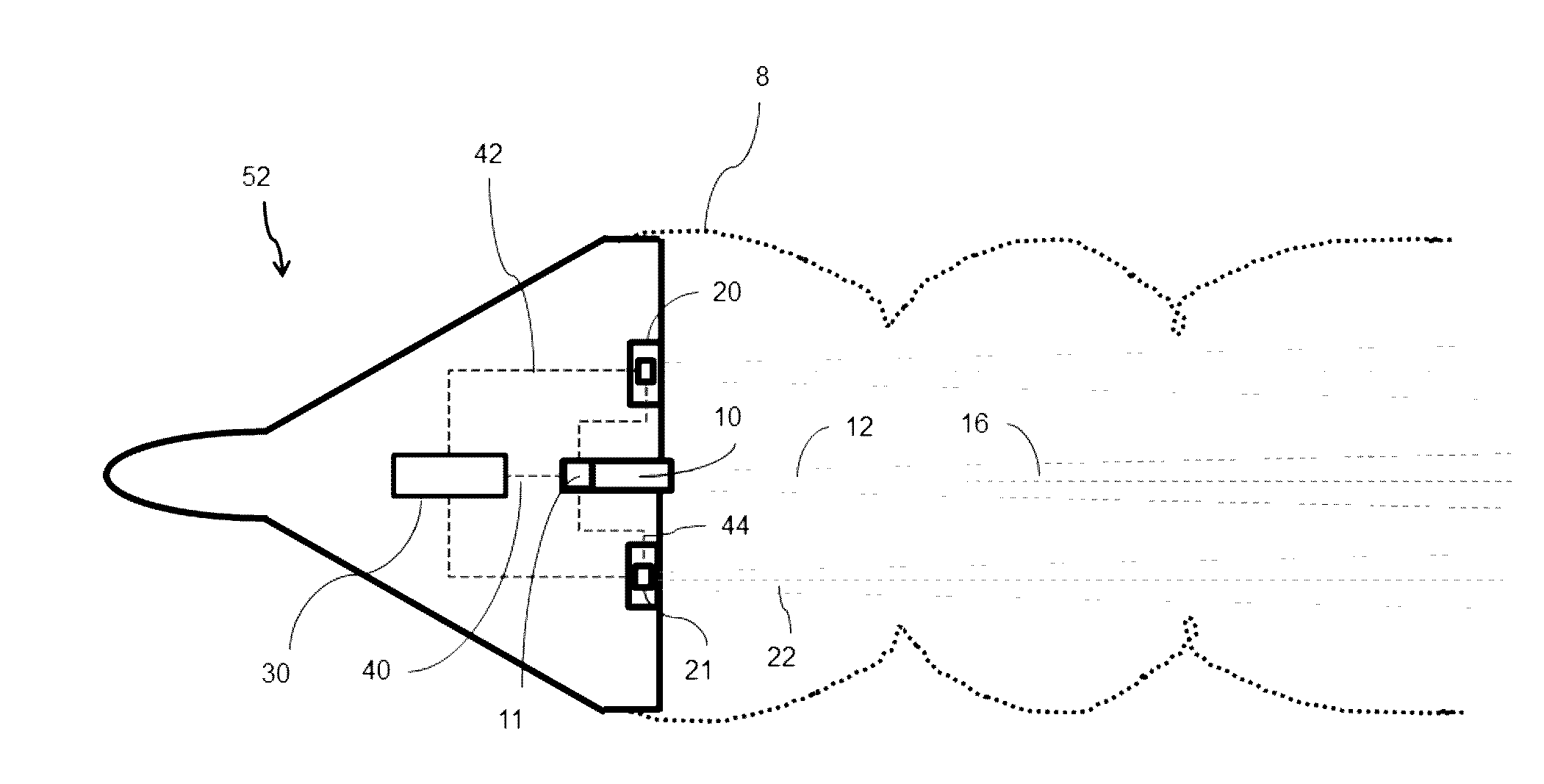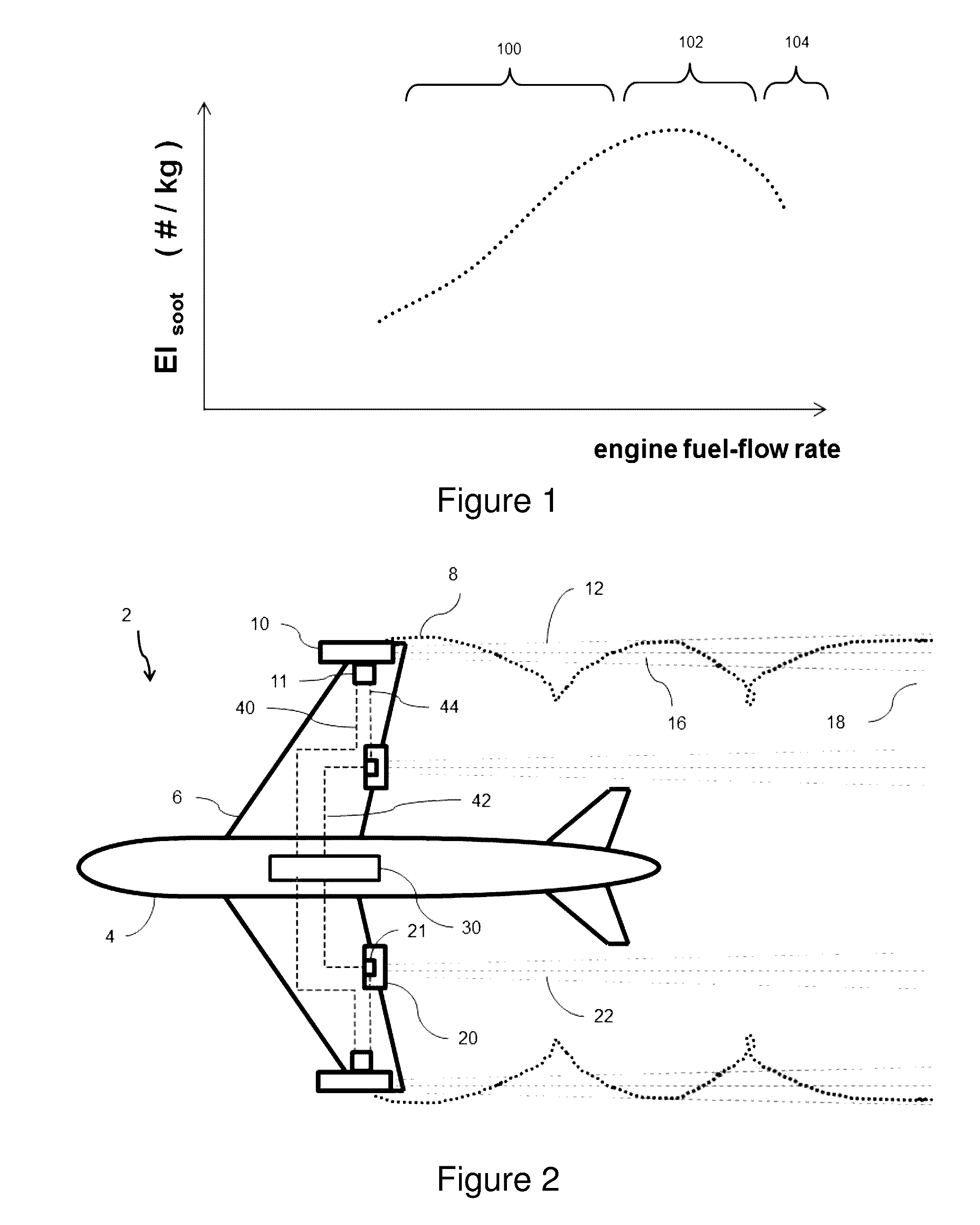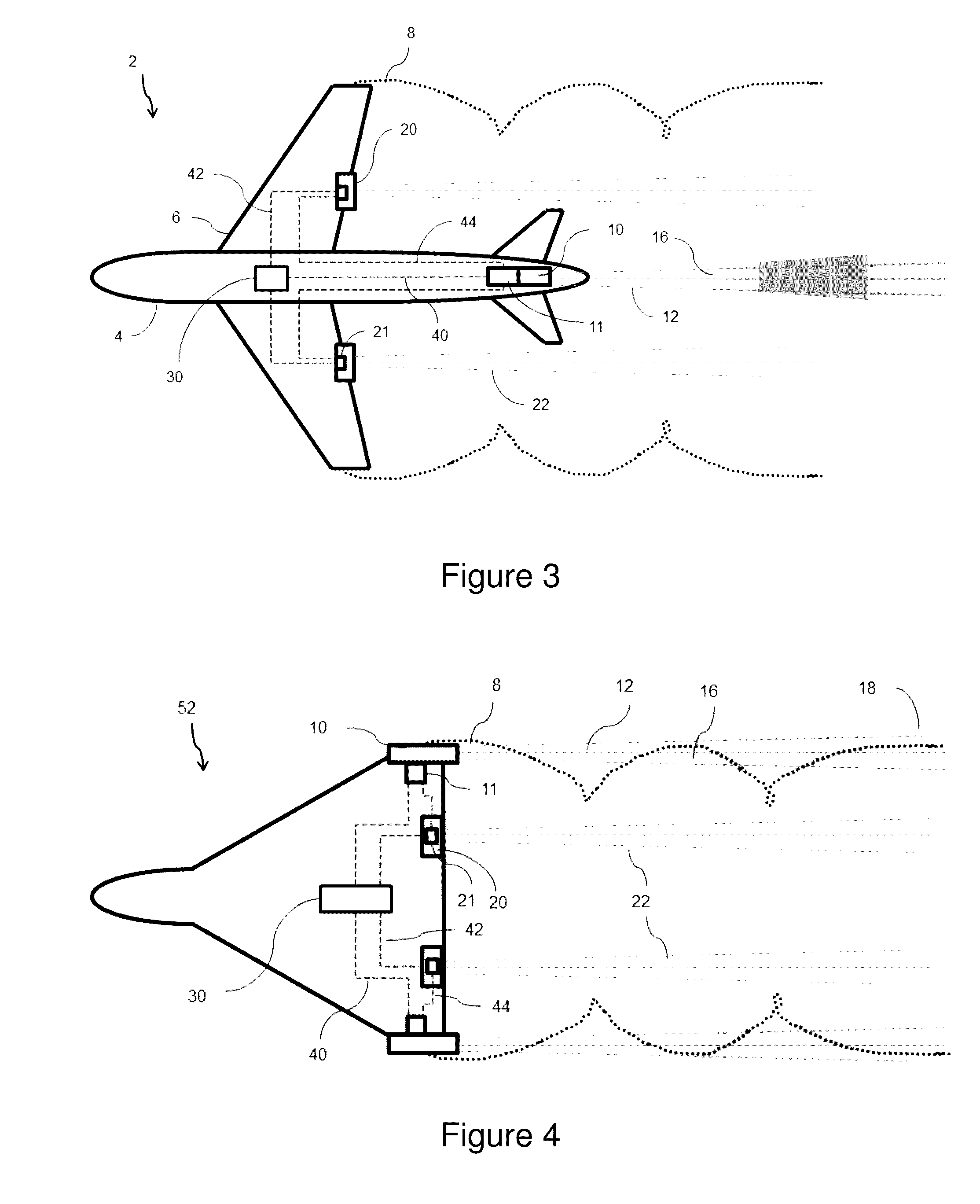Aircraft propulsion system
a propulsion system and aircraft technology, applied in the field of aircraft propulsion systems, can solve the problems of affecting the performance of the engine, and introducing significant weight into the engine, so as to reduce or increase the soot emissions of the engine, increase or decrease the effect of the soot emissions
- Summary
- Abstract
- Description
- Claims
- Application Information
AI Technical Summary
Benefits of technology
Problems solved by technology
Method used
Image
Examples
Embodiment Construction
[0036]Contrails, also known as condensation trails or vapour trails, are line-shaped ice clouds which can form in the exhaust plumes of aircraft engines. The climate impact of a contrail depends upon its longevity, its spatial extent and its optical depth, as well as external factors such as the ambient air temperature, and the strength of incoming sunlight, and the albedo of underlying cloud layers and / or surface.
[0037]Contrails reflect incoming sunlight away, exerting a cooling effect (during the day). However, they also absorb outgoing infra-red radiation, leading to a warming impact (day and night). The net effect is a balance of these two effects, and can change during the lifetime of the contrail.
[0038]In ambient air of sufficiently low humidity, a contrail is relatively short lived, disappearing in a timescale of seconds to minutes. However, if ambient air is supersaturated with respect to ice, a contrail can persist for tens of minutes or hours, spreading out over time to re...
PUM
 Login to View More
Login to View More Abstract
Description
Claims
Application Information
 Login to View More
Login to View More - R&D
- Intellectual Property
- Life Sciences
- Materials
- Tech Scout
- Unparalleled Data Quality
- Higher Quality Content
- 60% Fewer Hallucinations
Browse by: Latest US Patents, China's latest patents, Technical Efficacy Thesaurus, Application Domain, Technology Topic, Popular Technical Reports.
© 2025 PatSnap. All rights reserved.Legal|Privacy policy|Modern Slavery Act Transparency Statement|Sitemap|About US| Contact US: help@patsnap.com



